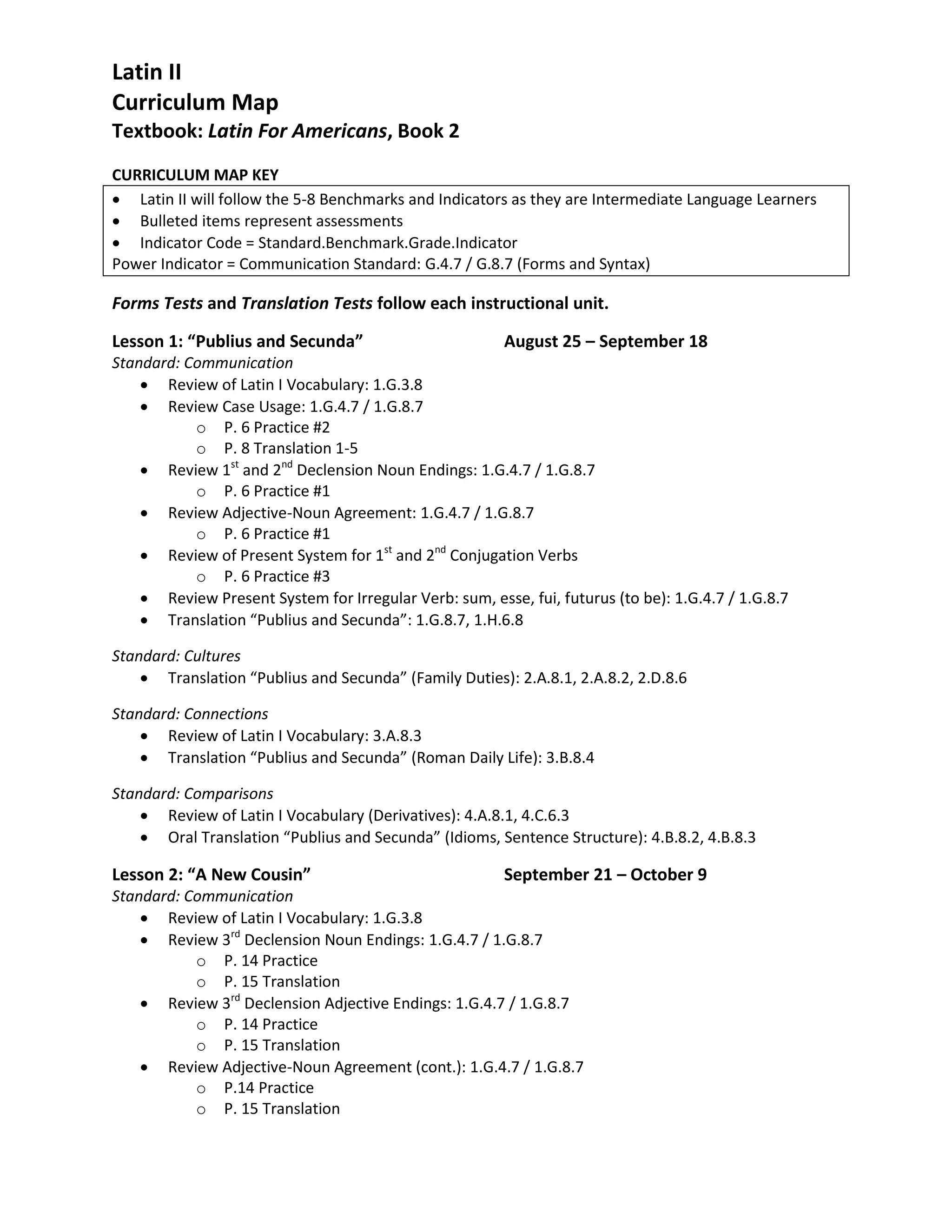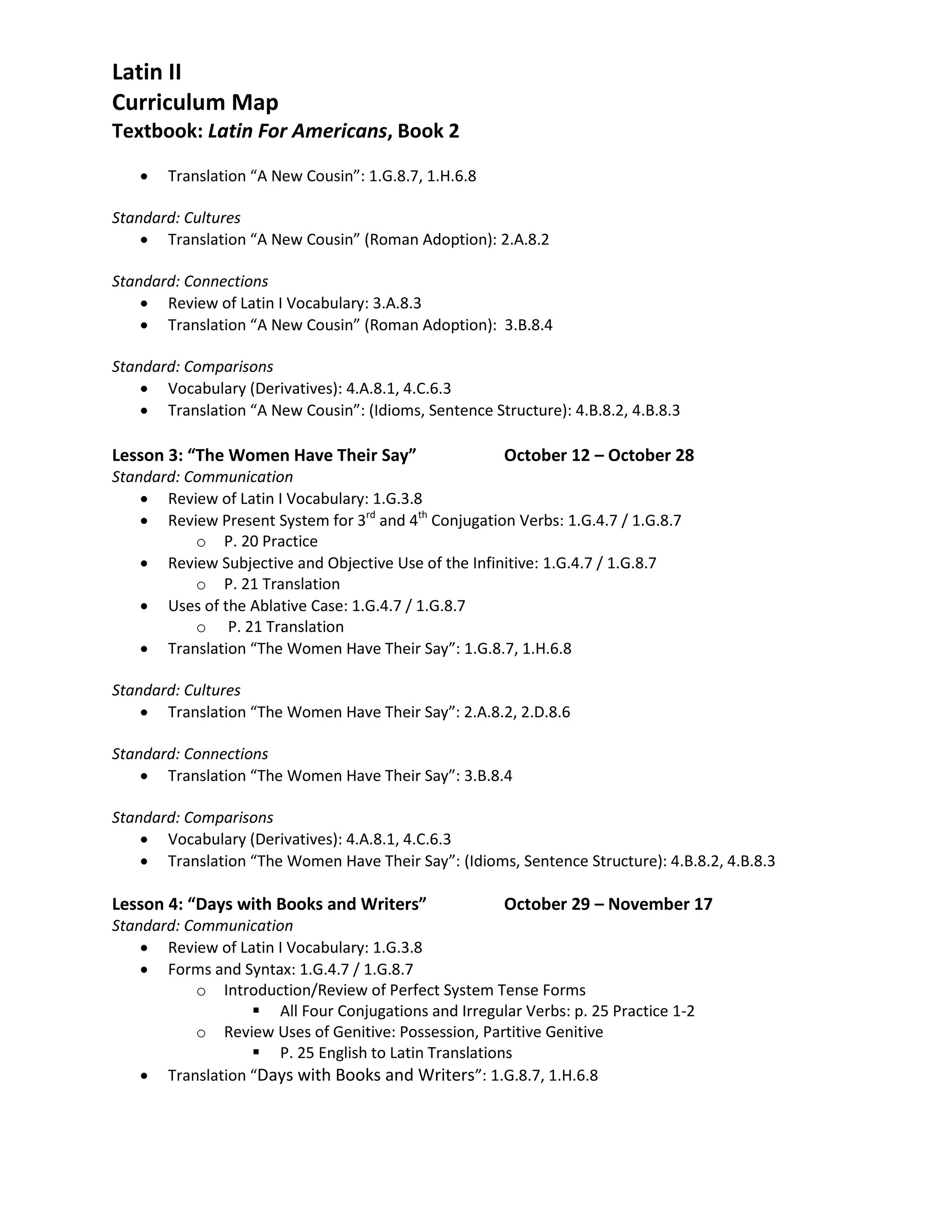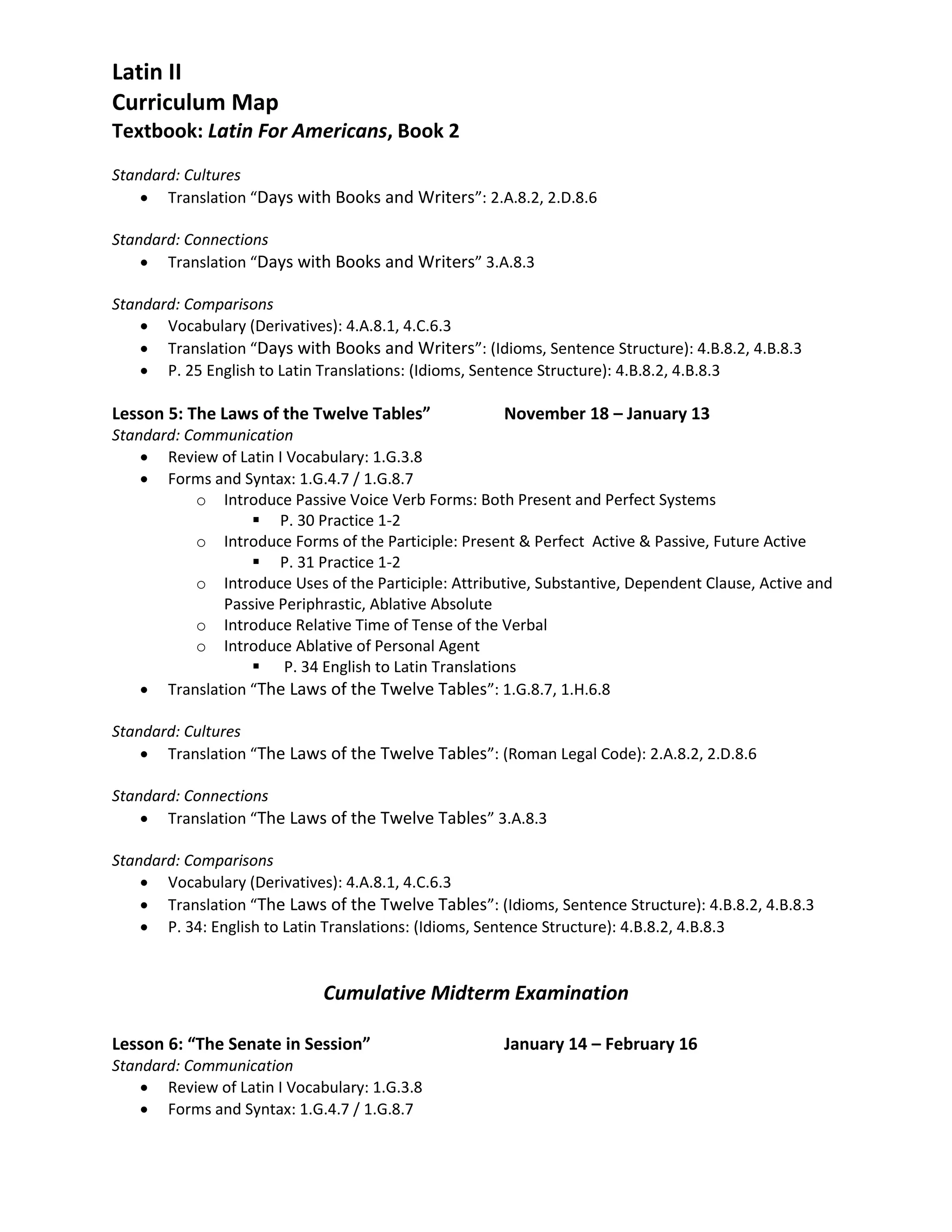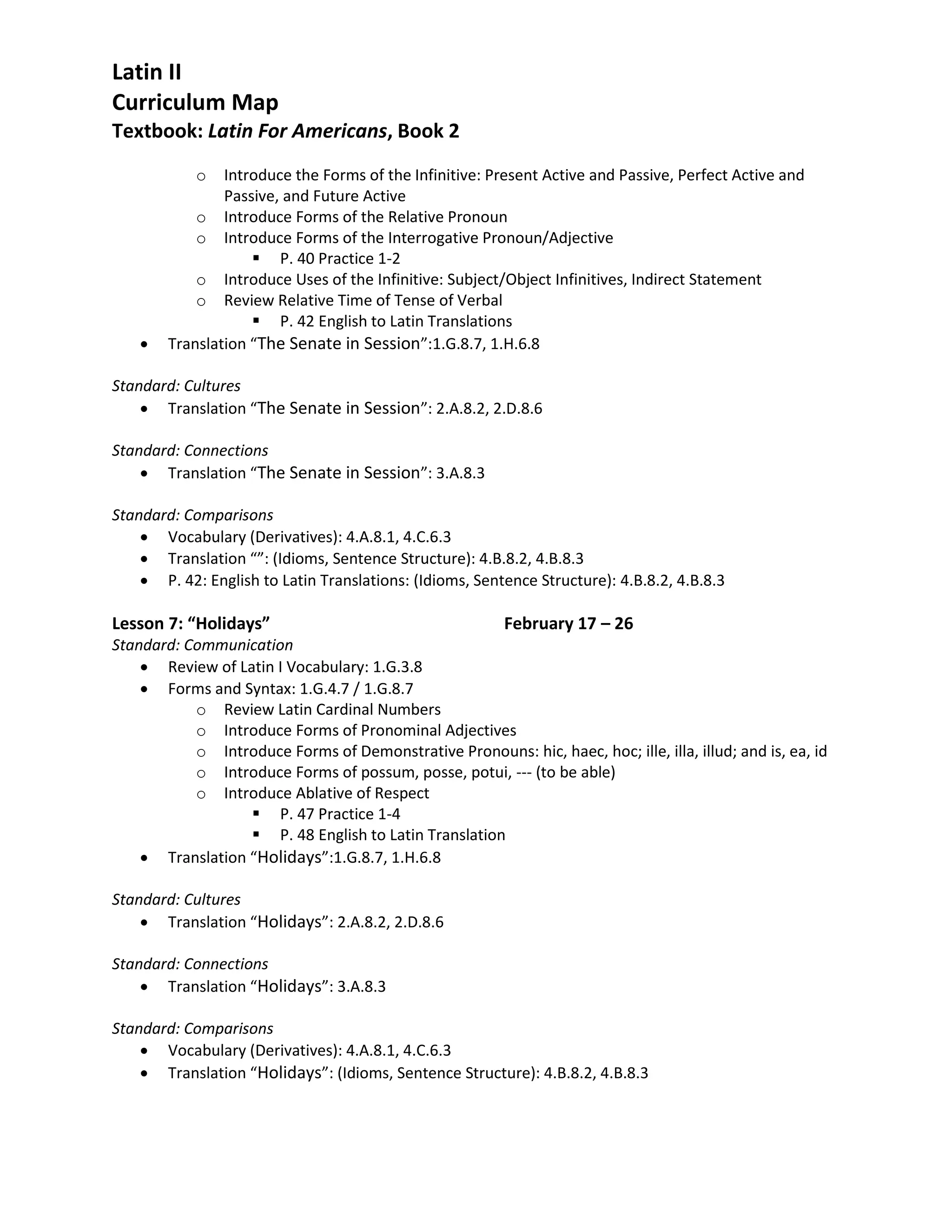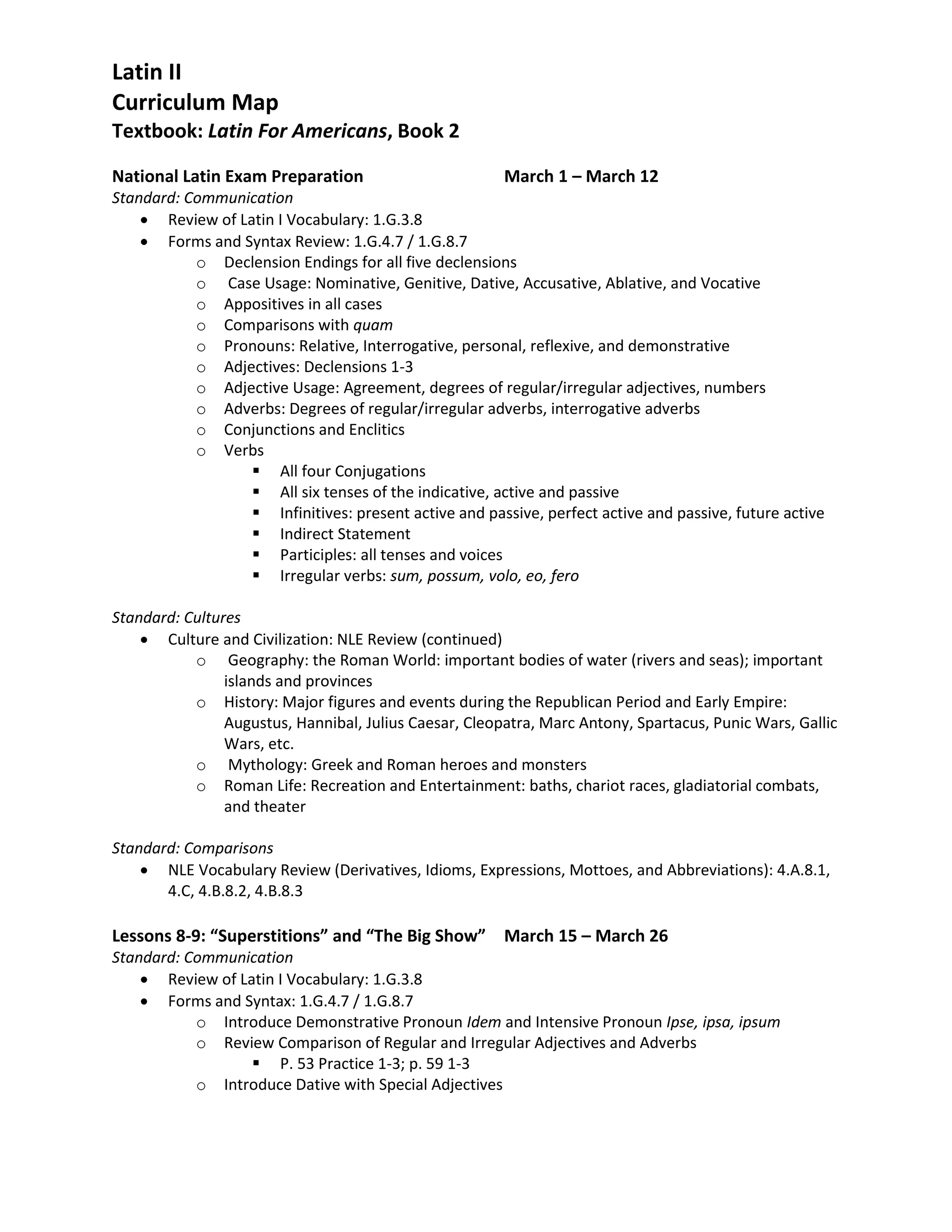This curriculum map outlines 12 lessons for a Latin II course using the textbook Latin For Americans, Book 2. Each lesson focuses on vocabulary, grammar forms and syntax, and a reading passage. Grammar topics include noun and adjective declensions, verb conjugations, cases, tenses, and moods. Reading passages cover aspects of Roman culture like family, adoption, law, and travel. Assessments include vocabulary practice, translation exercises, and midterm and final exams. The goal is for students to improve their skills in reading, writing, and communicating in Latin.
